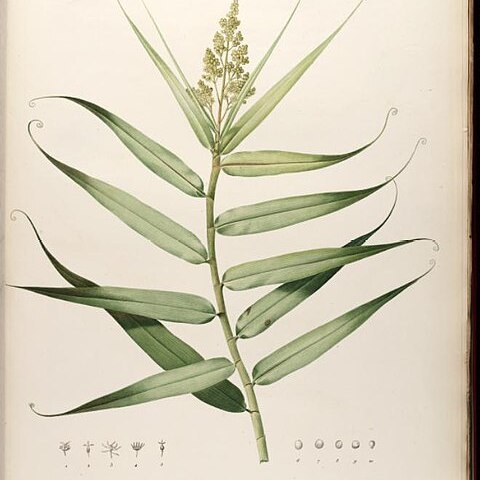Scandent lianes, with terete smooth stems up to 2.5 cm. in diameter and completely covered by the leaf-sheaths when young. Leaf-sheath parallel-veined, slit or entire; leaf-blade abruptly narrowed at the base, usually with a short petiolar or subpetiolar base and a long attenuate cirriform tip. Flowers hermaphrodite, mostly crowded towards the tips of the branches. Perianth-segments subpetaloid. Stamens as many as the perianth-segments, some sometimes reduced to staminodes. Style long, divided almost to the base into 3 (or 2) linear stigmas. Drupe small, subglobose or ovoid, with a woody endocarp, 1-locular, 1-seeded, rarely 2-locular and 2-seeded. Seed globose with a membranous testa.
Morphological characters and geographic distribution are the same as those for the family.
Ovary 3-celled, with a solitary ovule in, each cell
Perianth subpetaloid, 2-seriate, the outer shorter
Flowers hermaphrodite
Fruit a small berry.
Stamens 6

